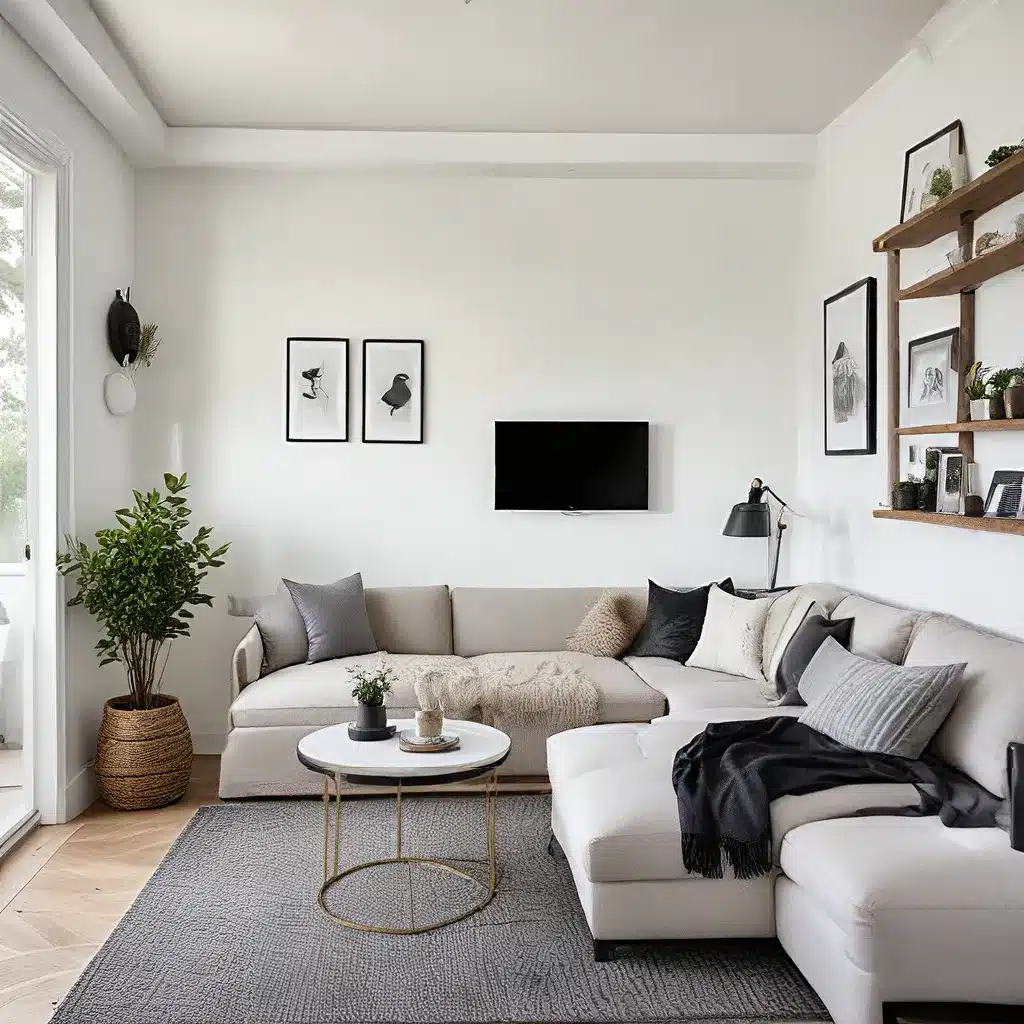
In a world where living spaces are becoming increasingly compact, the demand for efficient and visually appealing interior design solutions has never been higher. Minimalism, once considered a niche aesthetic, has now emerged as a dominant trend in the realm of small-space design. By embracing the principles of minimalism, homeowners and design enthusiasts can transform their compact quarters into havens of style and functionality.
Maximizing Space with Minimalist Design
At the heart of the minimalist approach lies the art of paring down, of creating an environment that is both visually uncluttered and highly practical. In the context of small-space design, this philosophy becomes particularly essential. By carefully selecting furniture and decor pieces that serve multiple purposes, homeowners can optimize the use of their limited square footage.
Urban Grace Interiors, a renowned design firm, specializes in helping clients achieve this delicate balance. “When working with small spaces, every inch counts,” explains the firm’s lead designer. “We focus on identifying multi-functional pieces that can serve as both stylish accents and practical storage solutions, allowing our clients to enjoy a streamlined aesthetic while maximizing their living areas.”
One prime example of this approach is the strategic use of built-in cabinetry. By incorporating custom-designed storage units into the walls or utilising alcoves, designers can create a seamless, integrated look that enhances the sense of spaciousness. This technique not only optimizes storage but also eliminates the need for bulky freestanding furniture, further amplifying the minimalist aesthetic.
Cultivating a Serene Ambiance
Minimalism in small-space design is not merely about creating a visually clean environment; it’s also about fostering a sense of serenity and calm. By limiting the number of decorative elements and focusing on simplicity, designers can curate a soothing atmosphere that promotes relaxation and well-being.
“One of the key principles of minimalist design is the use of neutral palettes,” notes the lead designer at Urban Grace Interiors. “By incorporating soft, muted tones and natural materials, we can create a sense of tranquility that allows the inhabitants to truly unwind in their intimate spaces.”
The strategic placement of natural light further enhances this serene ambiance. Minimalist design often emphasizes the importance of bringing in an abundance of daylight, whether through large windows, skylights, or carefully positioned mirrors that reflect and amplify the available light.
Embracing Versatility and Adaptability
In the realm of small-space living, the ability to adapt and evolve is paramount. Minimalist design principles lend themselves seamlessly to this need for versatility, enabling homeowners to personalize and reconfigure their spaces as their needs change.
“Flexible furnishings and multifunctional pieces are essential in small-space design,” explains the lead designer. “By incorporating elements like transformable furniture, modular shelving, and convertible sleeping solutions, we empower our clients to tailor their living environments to their evolving lifestyles.”
This versatility extends beyond the physical layout and extends to the visual aesthetic as well. Minimalist design often allows for easy transitions between different styles and themes, enabling homeowners to refresh their spaces with minimal effort and investment.
Sustainability and Mindful Living
As the world becomes increasingly conscious of its environmental impact, the sustainable and mindful aspects of minimalist design have gained significant traction. By embracing a minimalist approach, homeowners can not only optimize their living spaces but also reduce their carbon footprint and foster a more eco-friendly lifestyle.
“Minimalism is inherently aligned with the principles of sustainability,” observes the lead designer at Urban Grace Interiors. “By curating a streamlined collection of high-quality, durable furnishings and accessories, we help our clients minimize waste and create living environments that are both beautiful and environmentally responsible.”
This shift towards sustainable and mindful living is particularly evident in the rise of small-space living communities, where individuals and families are actively choosing to downsize and adopt a more intentional approach to their homes and possessions.
Luxury Touches in Compact Spaces
While minimalism is often associated with a pared-down aesthetic, it doesn’t mean sacrificing luxury and refinement. In fact, the principles of minimalist design can be seamlessly integrated with high-end materials, custom-crafted furnishings, and bespoke touches to create elevated small-space experiences.
“One of the common misconceptions about minimalist design is that it’s cold or impersonal,” notes the lead designer. “At Urban Grace Interiors, we strive to infuse our minimalist projects with thoughtful accents and luxurious finishes that elevate the overall experience and make our clients feel truly at home.”
This attention to detail and craftsmanship can be seen in the use of high-end materials, such as natural stone, solid wood, and premium fabrics, as well as the incorporation of custom-designed pieces that seamlessly integrate into the minimalist aesthetic.
Embracing the Compact Chic Lifestyle
As the demand for small-space living continues to grow, the principles of minimalist design have emerged as a powerful tool for homeowners and design enthusiasts alike. By maximizing space, fostering serenity, embracing versatility, and infusing luxury into compact quarters, this design approach offers a compelling solution for those seeking to live beautifully within a smaller footprint.
Whether you’re a seasoned design aficionado or simply looking to optimize your living space, the compact chic lifestyle, rooted in minimalist principles, presents an exciting opportunity to create a harmonious, functional, and visually captivating home that reflects your unique style and values.

